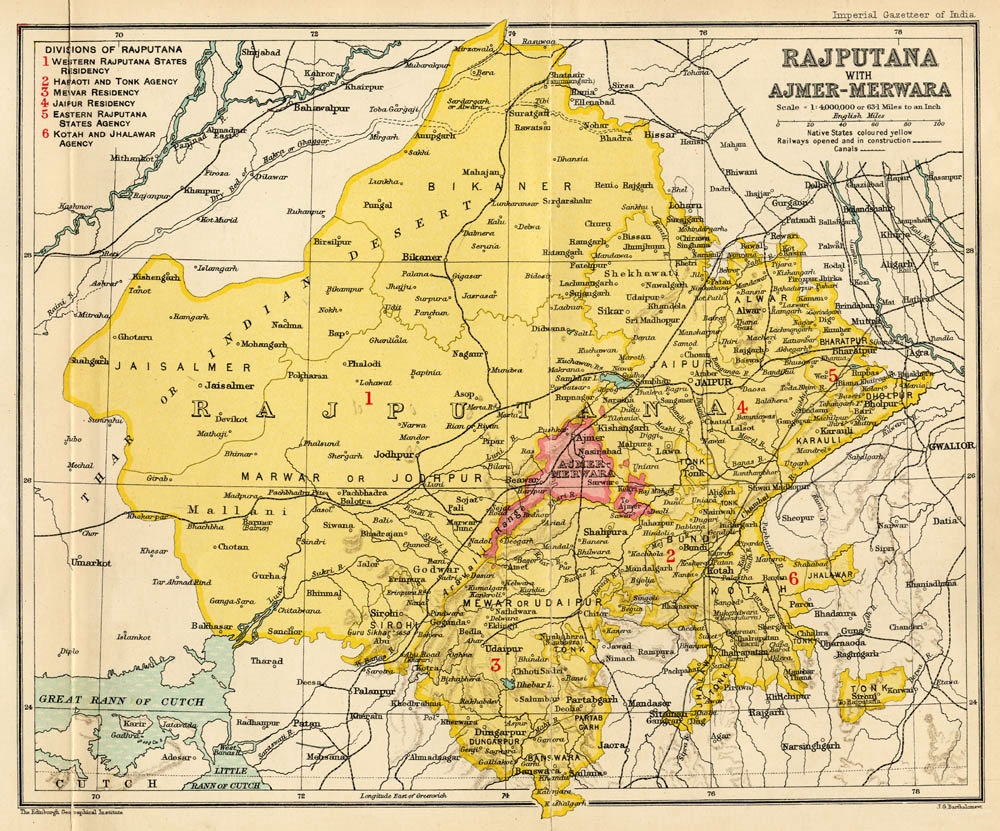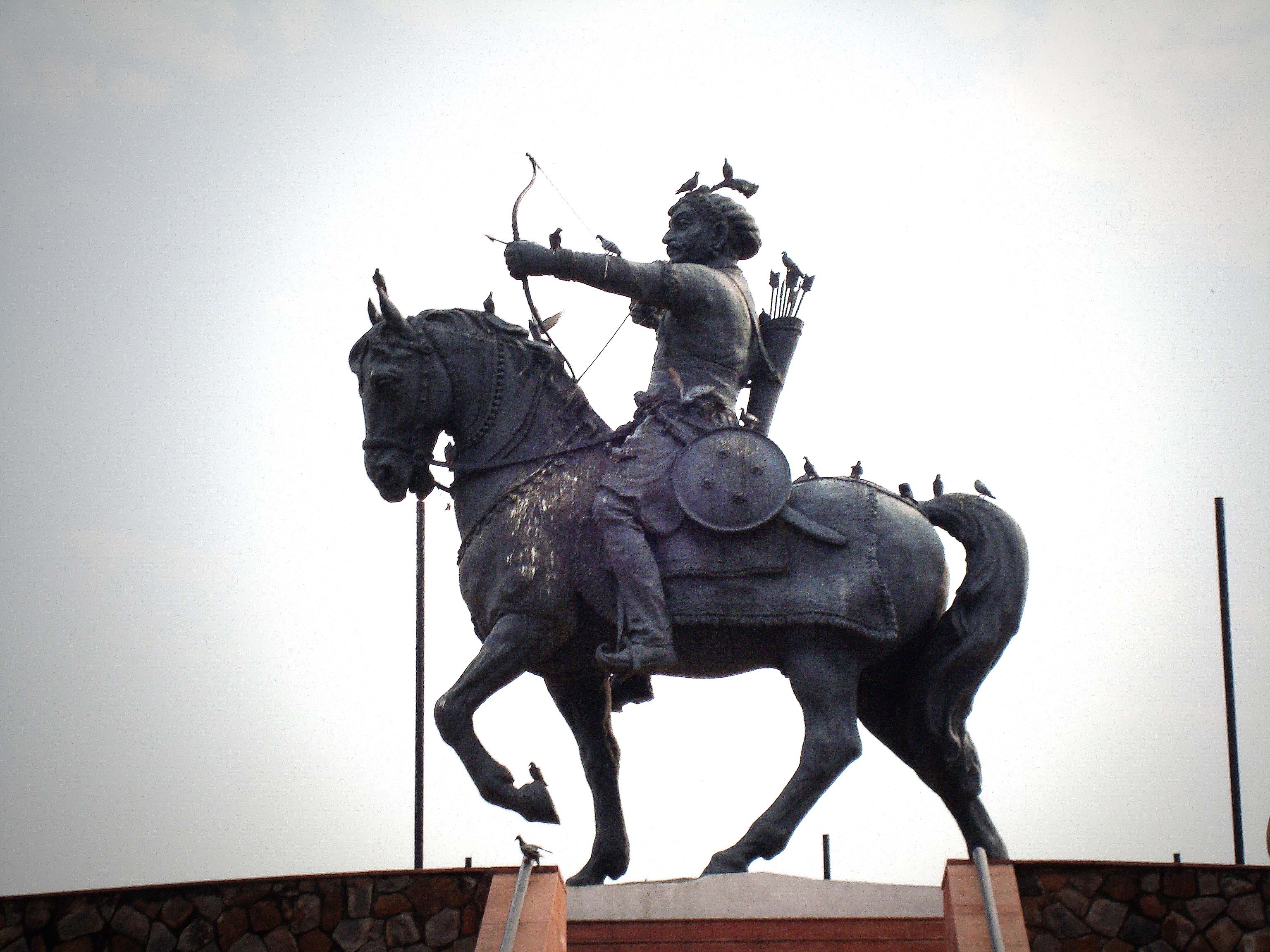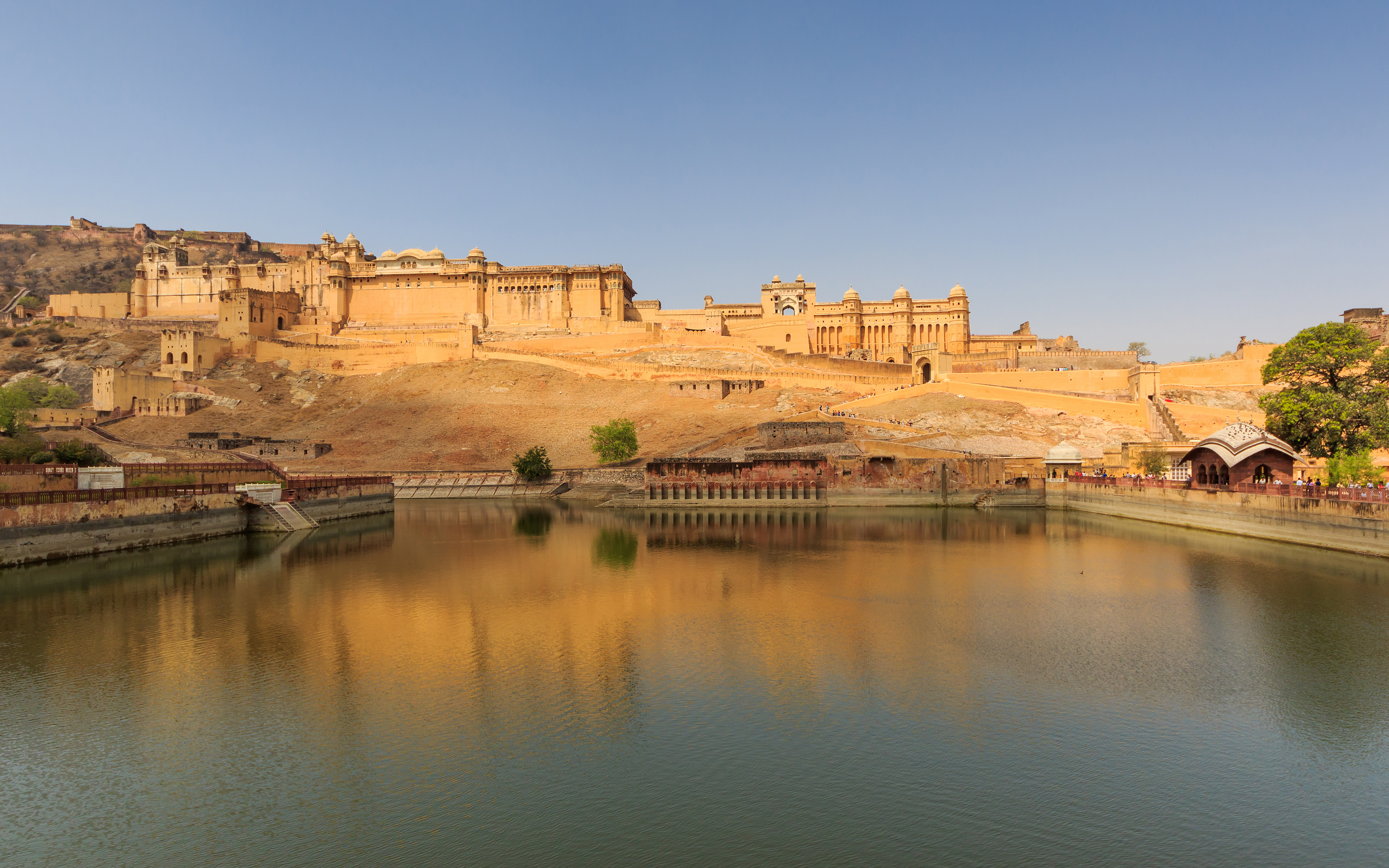|
Pajawan
Pajawan or Pajjun was the 5th Kachhwaha ruler of the Kingdom of Amber. He belonged to the Kachhwaha Rajput clan who had migrated to Rajputana in the 12th century. He was married to Prithviraj Chauhan's cousin and was a prominent and trusted general of Prithviraj. Pajwan fought 64 important battles in his military career. Reign According to the ''Prithviraj Raso'', Pajawan played a role in the battles at Hansi and Nagour, fighting alongside Prithviraj Chauhan, who subsequently appointed Pajawan the governor of Mahoba. He also helped Prithviraj in defeating Bhimdev, a Solanki king of Gujarat. In 1185, Raja Jaichand of Kannauj organised the Swayamvara of his daughter Sanyogita, inviting all the prominent kings and princes to the ceremony, but deliberately avoiding Prithviraj Chauhan. Furthermore, he placed an earthen statue of Prithviraj at the entrance of the venue, posing him as the doorman. Prithviraj got information about it. He arrived at Kannauj in disguise together with ... [...More Info...] [...Related Items...] OR: [Wikipedia] [Google] [Baidu] |
Kachhwaha
The Kachhwaha or Kachawa is a Rajput clan found primarily in India. Sometimes families within the clan ruled a number of kingdoms and princely states, such as Jaipur State, Jaipur, Bihar, Uttar Pradesh, Madhya Pradesh, Alwar State, Alwar and Maihar State, Maihar. Subclans Rajawat, Shekhawat, Naruka, Bikawat, Khangarot, Nathawat, Dhirawat, Bandhalgoti etc.are subclans of Kachwahas of Jaipur House. Clan deities Jamway Mata is their Clan Goddess (''kuldevi''). Historical temple dedicated to Jamway Mata is present in Jamwaramgarh sub-division of Jaipur District, Rajasthan. This temple was built by Raja Dulhe Rai Kachawaha after he won battle due to Goddess's blessings. Etymology According to Cynthia Talbot, the meaning of word ''Kachhwaha'' is tortoise. Origin There are many theories on the origin of the Kachhwahas. Suryavansh Origin Suryavansh Dynasty or Ikshwaku Dynasty or Raghuvansh Dynasty : Kachwaha claim descent from Kusha, a son of the avatar of Vishnu, Rama, as expres ... [...More Info...] [...Related Items...] OR: [Wikipedia] [Google] [Baidu] |
First Battle Of Tarain
The First Battle of Tarain, also spelt as the First Battle of Taroari, was fought in 1191 between the invading Ghurid army led by Muhammad of Ghor and the Rajput confederacy led by Prithviraj Chauhan, near Tarain (modern Taraori in Haryana, India). The battle ended in decisive victory for the Rajputs; however, Muhammad of Ghor managed to escape and returned to Ghazni. After the Ghurid armies were routed, they retreated to the Ghazni and left garrison of 2,000 soldiers under Zia ud-Din Tulaki to secure the fort of Tabarhind (present day Bhatinda) to delay the Rajput army and was successful in keeping them at bay for thirteen months, while Muhammad of Ghor, during these months, raised a stronger army of 120,000 men, and invaded again, leading to the Second Battle of Tarain. Sources The contemporary sources for the battle include ''Tajul-Ma'asir'' of Hasan Nizami (on the Ghurid side) and Jayanaka's ''Prithviraja Vijaya'' (on the Chahamana side). Later sources for the battle i ... [...More Info...] [...Related Items...] OR: [Wikipedia] [Google] [Baidu] |
Jaipur State
Jaipur State was a princely state in India during East India Company rule and thereafter under the British Raj. It signed a treaty creating a subsidiary alliance with the Company in 1818, after the Third Anglo-Maratha War. It acceded to independent India in 1947 and was integrated into India by 1949. Upon integration, the ruler was granted a pension (privy purse), certain privileges, and the use of the title ''Maharaja of Jaipur'' by the Government of India. However, the pension, privileges, and the use of the title were ended in 1971 by the 26th Amendment to the Constitution of India. History Jaipur's predecessor state was the Kingdom of Dhundhar founded in 1093 by Dullah Rai, also known as Dulha Rao. The state was known as Amber between the fourteenth century and 1727. In that year, a new capital was built and named Jayapura, when the kingdom was renamed as Jaipur. Mythical accounts The Kachwaha Rajputs claim descent from Kusha, son of the legendary Rama. Thei ... [...More Info...] [...Related Items...] OR: [Wikipedia] [Google] [Baidu] |
Rajput
Rajput (from Sanskrit ''raja-putra'' 'son of a king') is a large multi-component cluster of castes, kin bodies, and local groups, sharing social status and ideology of genealogical descent originating from the Indian subcontinent. The term Rajput covers various patrilineal clans historically associated with warriorhood: several clans claim Rajput status, although not all claims are universally accepted. According to modern scholars, almost all Rajput clans originated from peasant or pastoral communities. Over time, the Rajputs emerged as a social class comprising people from a variety of ethnic and geographical backgrounds. During the 16th and 17th centuries, the membership of this class became largely hereditary, although new claims to Rajput status continued to be made in the later centuries. Several Rajput-ruled kingdoms played a significant role in many regions of central and northern India from seventh century onwards. The Rajput population and the former Rajput stat ... [...More Info...] [...Related Items...] OR: [Wikipedia] [Google] [Baidu] |
Rajputana
Rājputana, meaning "Land of the Rajputs", was a region in the Indian subcontinent that included mainly the present-day Indian state of Rajasthan, as well as parts of Madhya Pradesh and Gujarat, and some adjoining areas of Sindh in modern-day southern Pakistan. The main settlements to the west of the Aravalli Hills came to be known as ''Rajputana'', early in the Medieval Period. The name was later adopted by British government as the Rajputana Agency for its dependencies in the region of the present-day Indian state of Rājasthān. The Rajputana Agency included 18 princely states, two chiefships and the British district of Ajmer-Merwara. This British official term remained until its replacement by "Rajasthan" in the constitution of 1949. Name George Thomas (''Military Memories'') was the first in 1800, to term this region the ''Rajputana Agency''. The historian John Keay in his book, ''India: A History'', stated that the ''Rajputana'' name was coined by the British, but that ... [...More Info...] [...Related Items...] OR: [Wikipedia] [Google] [Baidu] |
Prithviraj Chauhan
Prithviraja III (IAST: Pṛthvī-rāja; reign. – 1192 CE), popularly known as Prithviraj Chauhan or Rai Pithora, was a king from the Chauhan (Chahamana) dynasty who ruled the territory of Sapadalaksha, with his capital at Ajmer in present-day Rajasthan. Ascending the throne as a minor in 1177 CE, Prithviraj inherited a kingdom which stretched from Thanesar in the north to Jahazpur (Mewar) in the south, which he aimed to expand by military actions against neighbouring kingdoms, most notably defeating the Chandelas. Prithviraj led a coalition of several Rajput kings and defeated the Ghurid army led by Muhammad Ghori near Taraori in 1191 AD. However, in 1192 CE, Ghori returned with an army of Turkish mounted archers and defeated the Rajput army on the same battlefield. Prithviraj fled the battlefield, but was captured near Sirsa and executed. His defeat at Tarain is seen as a landmark event in the Islamic conquest of India, and has been described in several semi-legendar ... [...More Info...] [...Related Items...] OR: [Wikipedia] [Google] [Baidu] |
Jaipur State
Jaipur State was a princely state in India during East India Company rule and thereafter under the British Raj. It signed a treaty creating a subsidiary alliance with the Company in 1818, after the Third Anglo-Maratha War. It acceded to independent India in 1947 and was integrated into India by 1949. Upon integration, the ruler was granted a pension (privy purse), certain privileges, and the use of the title ''Maharaja of Jaipur'' by the Government of India. However, the pension, privileges, and the use of the title were ended in 1971 by the 26th Amendment to the Constitution of India. History Jaipur's predecessor state was the Kingdom of Dhundhar founded in 1093 by Dullah Rai, also known as Dulha Rao. The state was known as Amber between the fourteenth century and 1727. In that year, a new capital was built and named Jayapura, when the kingdom was renamed as Jaipur. Mythical accounts The Kachwaha Rajputs claim descent from Kusha, son of the legendary Rama. Thei ... [...More Info...] [...Related Items...] OR: [Wikipedia] [Google] [Baidu] |
Amber, India
Amber or Amer, is a city near Jaipur city in Jaipur district in the Indian state of Rajasthan. It is now a part of the Jaipur Municipal Corporation. The picturesque situation of Amber at the mouth of a rocky mountain gorge, in which nestles a lake, has attracted the admiration of travellers, including Victor Jacquemont and Reginald Heber. It is seen to be a remarkable example for its combined Rajput-Mughal architecture. The Amber Fort, a UNESCO World Heritage Site, is the top tourist attraction in the Jaipur area. History The state of Jaipur was earlier known as Amber or Dhundhar and was controlled by Meena chiefs of five different tribes who were under suzerainty of the Bargurjar Rajput Raja of Deoti. Later a Kachhwaha prince Dulha Rai destroyed the sovereignty of Meenas and also defeated Bargurjars of Deoli and took Dhundhar fully under Kachwaha rule. Much of the present structure known as Amber Fort is actually the palace built by Mughal Emperor Akbar's Navaratnas Raja ... [...More Info...] [...Related Items...] OR: [Wikipedia] [Google] [Baidu] |
Hinduism
Hinduism () is an Indian religion or '' dharma'', a religious and universal order or way of life by which followers abide. As a religion, it is the world's third-largest, with over 1.2–1.35 billion followers, or 15–16% of the global population, known as Hindus. The word ''Hindu'' is an exonym, and while Hinduism has been called the oldest religion in the world, many practitioners refer to their religion as '' Sanātana Dharma'' ( sa, सनातन धर्म, lit='the Eternal Dharma'), a modern usage, which refers to the idea that its origins lie beyond human history, as revealed in the Hindu texts. Another endonym is ''Vaidika dharma'', the dharma related to the Vedas. Hinduism is a diverse system of thought marked by a range of philosophies and shared concepts, rituals, cosmological systems, pilgrimage sites, and shared textual sources that discuss theology, metaphysics, mythology, Vedic yajna, yoga, agamic rituals, and temple building, among other to ... [...More Info...] [...Related Items...] OR: [Wikipedia] [Google] [Baidu] |
Prithviraj Raso
The ''Prithviraj Raso'' (IAST: Pṛthvīrāja Rāso) is a Braj language epic poem about the life of Prithviraj Chauhan (reign. c. 1177–1192 CE). It is attributed to Chand Bardai, who according to the text, was a court poet of the king. The earliest extant copy of the text dates back to the 16th century, although some scholars date its oldest version to the 13th century. By the 19th century, several interpolations and additions had been made to the original text under the patronage from Rajput rulers. The text now exists in four recensions. It contains a mixture of historical facts and imaginary legends, and is not considered historically reliable. Authorship and date According to tradition, the ''Prithviraj Raso'' was composed by Chand Bardai, Prithviraj's court poet (''raj kavi''), who accompanied the king in all his battles.Gopal, Madan (1996) ''Origin and Development of Hindi/Urdu Literature'' Deep & Deep Publications, New Delhi, India, page 8, The last canto, which ... [...More Info...] [...Related Items...] OR: [Wikipedia] [Google] [Baidu] |
Bhima II
Bhima II (r. c. 1178–1240 CE), also known as ''Bhola Bhima'', was an Indian king who ruled parts of present-day Gujarat. He was a member of the Chaulukya (also called Chalukya or Solanki) dynasty. During his reign, the dynasty's power declined greatly as a result of rebellions by the feudatories as well as external invasions by the Ghurids, the Paramaras, and the Yadavas of Devagiri. The kingdom, however, was saved by his generals Arnoraja, Lavanaprasada and Viradhavala, whose family established the Vaghela dynasty. Early life Bhima II was a son of the Chaulukya king Ajayapala (Chaulukya dynasty), Ajayapala. He succeeded his brother Mularaja II at a young age. Taking advantage of his young age, some of his ''mandalika''s (provincial governors) rebelled against him in order to establish independent states. His loyal feudatory Arnoraja came to his rescue, and died fighting the rebels. Arnoraja's descendants Lavanaprasada and Viradhavala became powerful during Bhima's reign, ... [...More Info...] [...Related Items...] OR: [Wikipedia] [Google] [Baidu] |
Gujarat
Gujarat (, ) is a state along the western coast of India. Its coastline of about is the longest in the country, most of which lies on the Kathiawar peninsula. Gujarat is the fifth-largest Indian state by area, covering some ; and the ninth-most populous state, with a population of 60.4 million. It is bordered by Rajasthan to the northeast, Dadra and Nagar Haveli and Daman and Diu to the south, Maharashtra to the southeast, Madhya Pradesh to the east, and the Arabian Sea and the Pakistani province of Sindh to the west. Gujarat's capital city is Gandhinagar, while its largest city is Ahmedabad. The Gujaratis are indigenous to the state and their language, Gujarati, is the state's official language. The state encompasses 23 sites of the ancient Indus Valley civilisation (more than any other state). The most important sites are Lothal (the world's first dry dock), Dholavira (the fifth largest site), and Gola Dhoro (where 5 uncommon seals were found). Lothal i ... [...More Info...] [...Related Items...] OR: [Wikipedia] [Google] [Baidu] |







